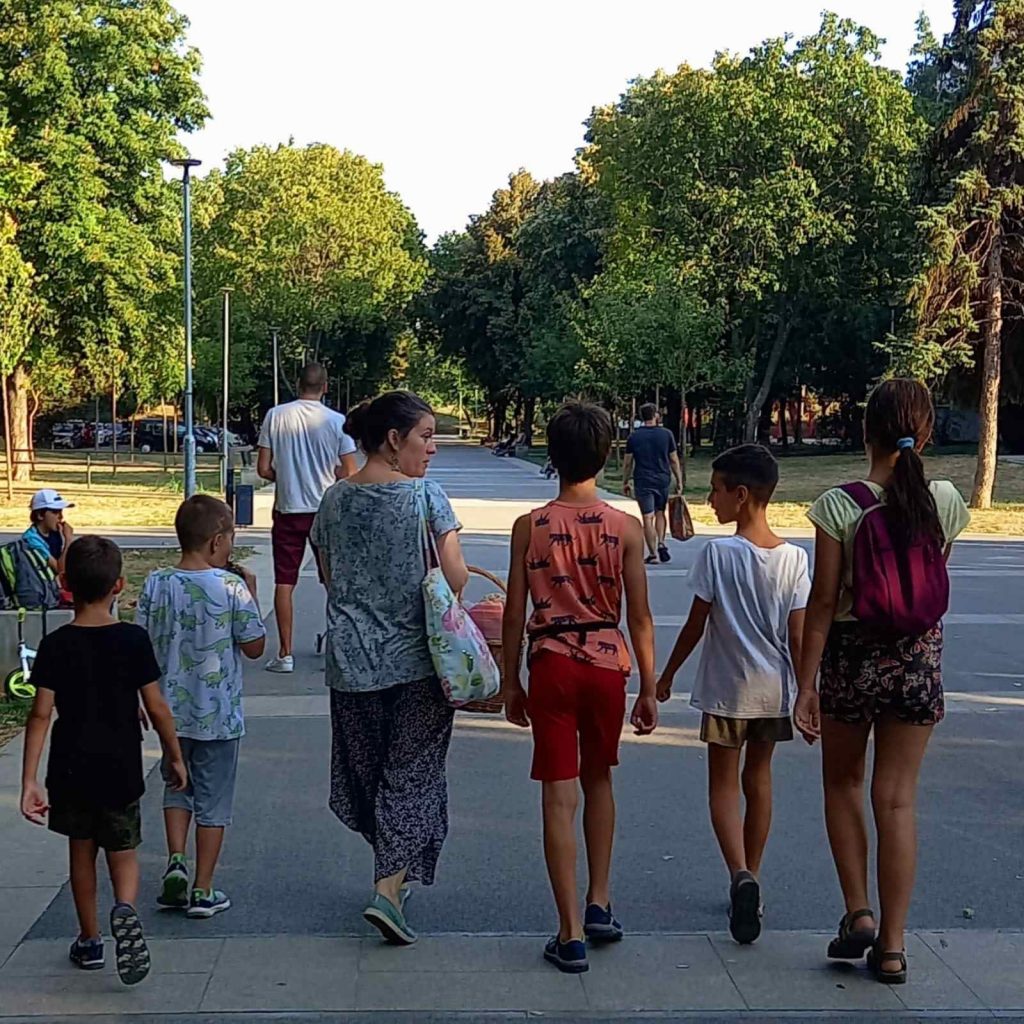On Sunday, August 7, CEUS organized the first “green” walk for children aged 8 to 12, in Block 45 in New Belgrade, led by Milja Vuković. In order to encourage the youngest fellow citizens to get to know, love and respect nature in the city, we chose ordinary, well-known public green spaces, which many of the participants use every day, but we tried to talk about them in an unusual way.
We made a small map of nature in the city, and all the creatures we mentioned, and all the stories about them, come from the blocks of Novi Beograd. We talked about where hedgehogs sleep, where sparrows nest, and where bats hibernate during the winter… We thought about why earthworms are so important, which trees provide the best shade, why fragrant flower meadows are useful for us, which predators we know and how they help us, how gray crows protect their eggs from martens, what jackals eat, but also whether animals and plants are hot and thirsty… We learned what the maternity hospital for bugs looks like, how insects use it, and when we can expect cubs. We also mentioned fish, wasps, crabs, dandelions, lindens, sophoras, and many other creatures from our closest environment that we hadn’t noticed until then.
We learned what habitat can be: a meadow, a building, a coast, a single tree, a bush, a pile of leaves, or simply a planter on our terrace…
The children who walked and talked with us know a lot about different animals, but mostly not about those creatures from their immediate vicinity… They have more knowledge about exotic species, because of the children’s shows and cartoons they watch. It seems to us that they lack the opportunity to directly observe and get to know nature, but they also lack practical children’s educational content about the nature that surrounds them in the city…
This walk was implemented by CEUS through the project “Ecological Parameters for Healthier Cities”, within the program “Active citizens – a better society: through advocacy towards cooperation and democratic development of Serbia”, which is implemented by BOŠ with the support of the American people through the American Agency for International Development ( USAID).












